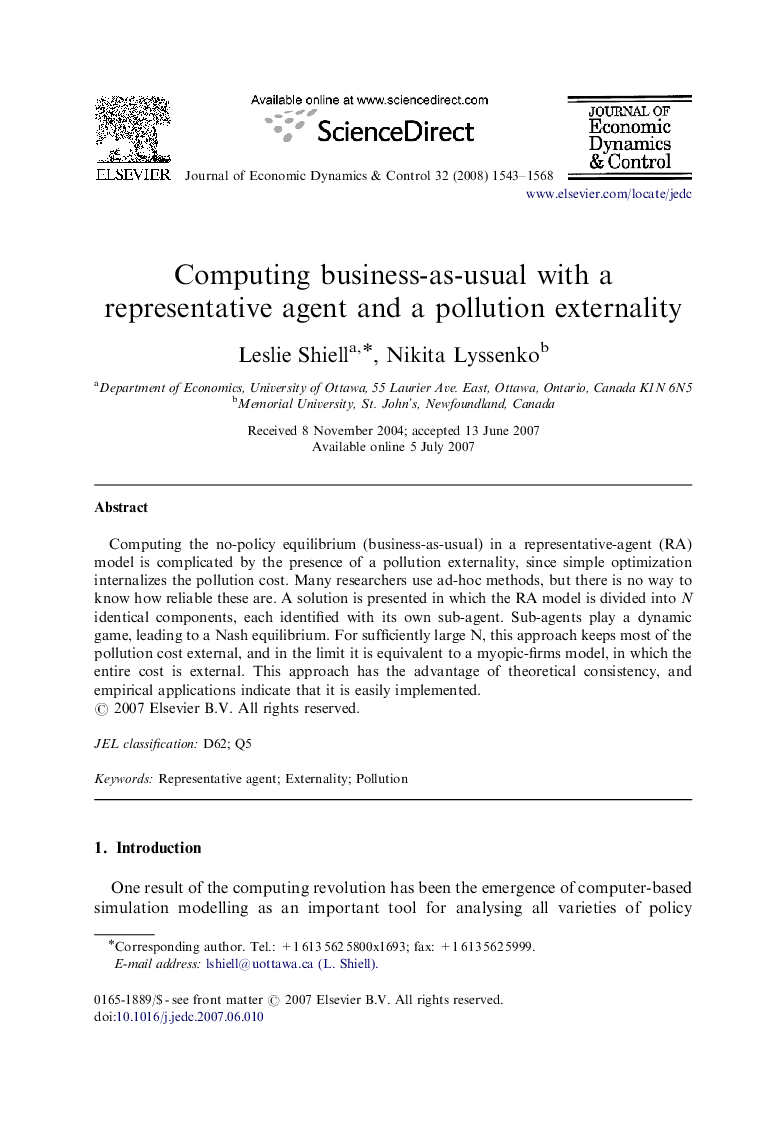| Article ID | Journal | Published Year | Pages | File Type |
|---|---|---|---|---|
| 5099450 | Journal of Economic Dynamics and Control | 2008 | 26 Pages |
Abstract
Computing the no-policy equilibrium (business-as-usual) in a representative-agent (RA) model is complicated by the presence of a pollution externality, since simple optimization internalizes the pollution cost. Many researchers use ad-hoc methods, but there is no way to know how reliable these are. A solution is presented in which the RA model is divided into N identical components, each identified with its own sub-agent. Sub-agents play a dynamic game, leading to a Nash equilibrium. For sufficiently large N, this approach keeps most of the pollution cost external, and in the limit it is equivalent to a myopic-firms model, in which the entire cost is external. This approach has the advantage of theoretical consistency, and empirical applications indicate that it is easily implemented.
Related Topics
Physical Sciences and Engineering
Mathematics
Control and Optimization
Authors
Leslie Shiell, Nikita Lyssenko,
